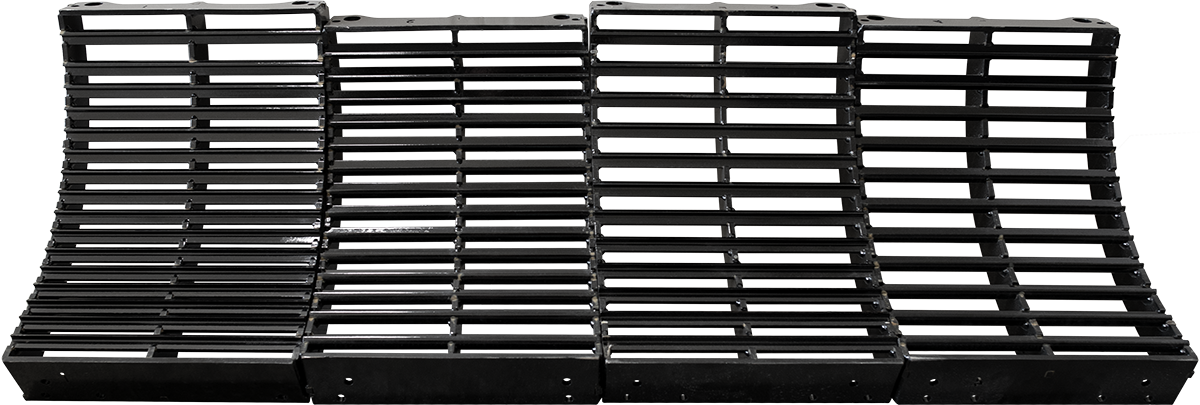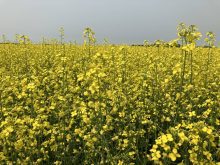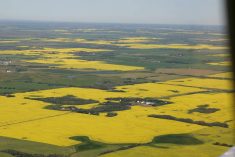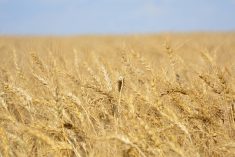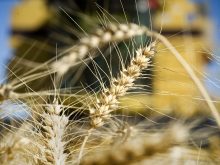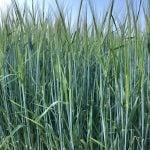Fed prices weaken
Fed steers traded 50 cents per hundredweight lower and fed heifers were $1 lower last week, said Canfax.
Feeders had smaller show lists and packers were less aggressive. Trade did not begin until midweek. The volume traded fell 22 percent. Feedlots reported they are still current in their marketing.
Fed cattle exports to the United States two weeks ago totalled nearly 17,000 head.
The fairly steady Canadian market last week and a weaker U.S. market meant the U.S.-Canada basis narrowed to about $11 per cwt.
Read Also

Strong canola exports expected to tighten supply
Canola exports will end up the third strongest in the past 10 years, according to recent Canadian Grain Commission weekly export data.
Alberta prices Dec. 8 in light trade saw steers at $156-$158.75 rail grade and heifers at $158.75.
Market activity should wind down into the holiday period. Some plants are comfortable with extended live inventory, but feedlots will be selling cattle that have higher break-evens and will be pushing for steady to higher prices.
Canfax expects the result will likely be steady prices to the end of the year.
Canadian beef steady
Canadian cutouts were steady into the end of November. Kills are small compared to a year ago, putting less product into the pipeline. U.S. cutouts gained nearly $4 US per cwt. last week.
Calgary wholesale prices for delivery this week were mostly steady with steers $158-$159 Cdn.
Feeder quality an issue
Alberta auction market volumes dropped to about 51,000 head, down 26 percent from the week before and down five percent from the year before.
Quality continues to be an issue in the feeder market in some locations, said Canfax.
Feeder price averages were steady to slightly softer with top quality cattle steady and medium quality under pressure.
Steers 300-600 lb. traded 25 cents-$1.50 per cwt. lower, while heifers of the same weight group were 50 cents-$2.50 higher.
Steers 600-800 lb. rose 50 cents-$1 and heifers were steady. Heavy feeder steers and heifers fell 50 cents-$1.75.
D1, 2 cows jumped up almost $5 following the recent larger kills. Butcher bulls rose $3.
Volumes in December are expected to tail off following the record number that moved in November. Alberta auction markets traded more than 430,000 head, up 48 percent from a year ago. That included about 46,000 head exported.
Stock bred cows sold at $700-$1,150 with tops to $1,450 in central Alberta. Bred heifers also brought $700-$1,150 with tops to $1,550 in southern Alberta. Cow-calf pairs ranged between $700 and $1,375 in northern Alberta.
Hog prices rise
Cash hog prices in the U.S. climbed early but then fell back late in the week.
Snow and cold weather in the U.S. Midwest made hog deliveries difficult. Packing plant profit margins narrowed late in the week.
About 2.13 million head were federally slaughtered, down from 2.17 million the week before but up from the 2.1 million processed in the same week last year.
The Iowa-southern Minnesota live cash price for hogs delivered to plants rose early in the week, but by Dec. 9 had slipped to $45 US, from $45.50 reported Dec. 2.
The U.S. Department of Agriculture composite pork carcass cut-out value was $67 per cwt. on Dec. 9, down from the $68.65 posted Dec. 2.
Light lambs stronger
Ontario Stockyards Inc. reported 2,539 sheep and lambs and 387 goats traded. Light lambs sold at prices $10 per cwt. higher. Heavy lambs, sheep and goats traded steady to higher.

